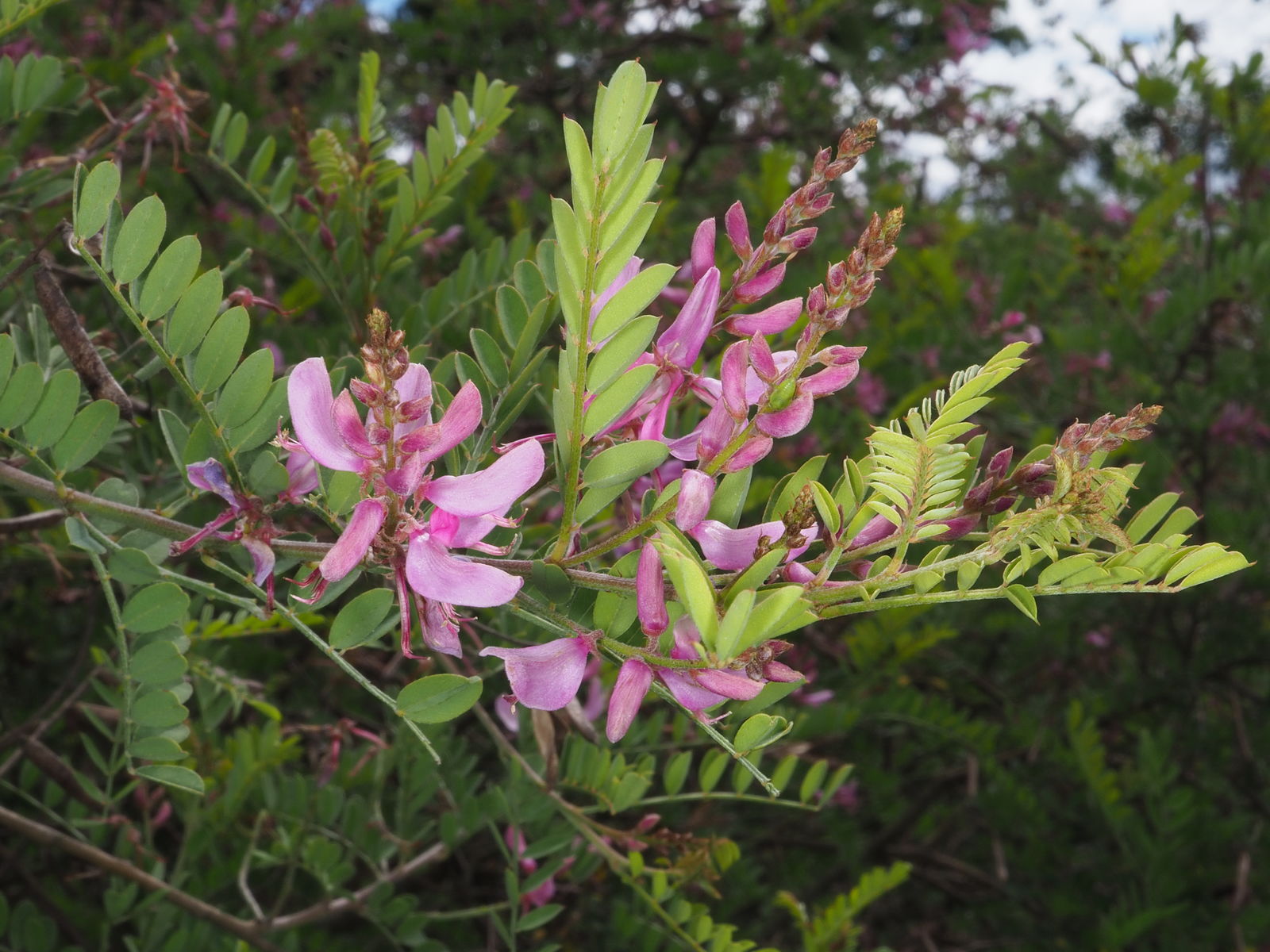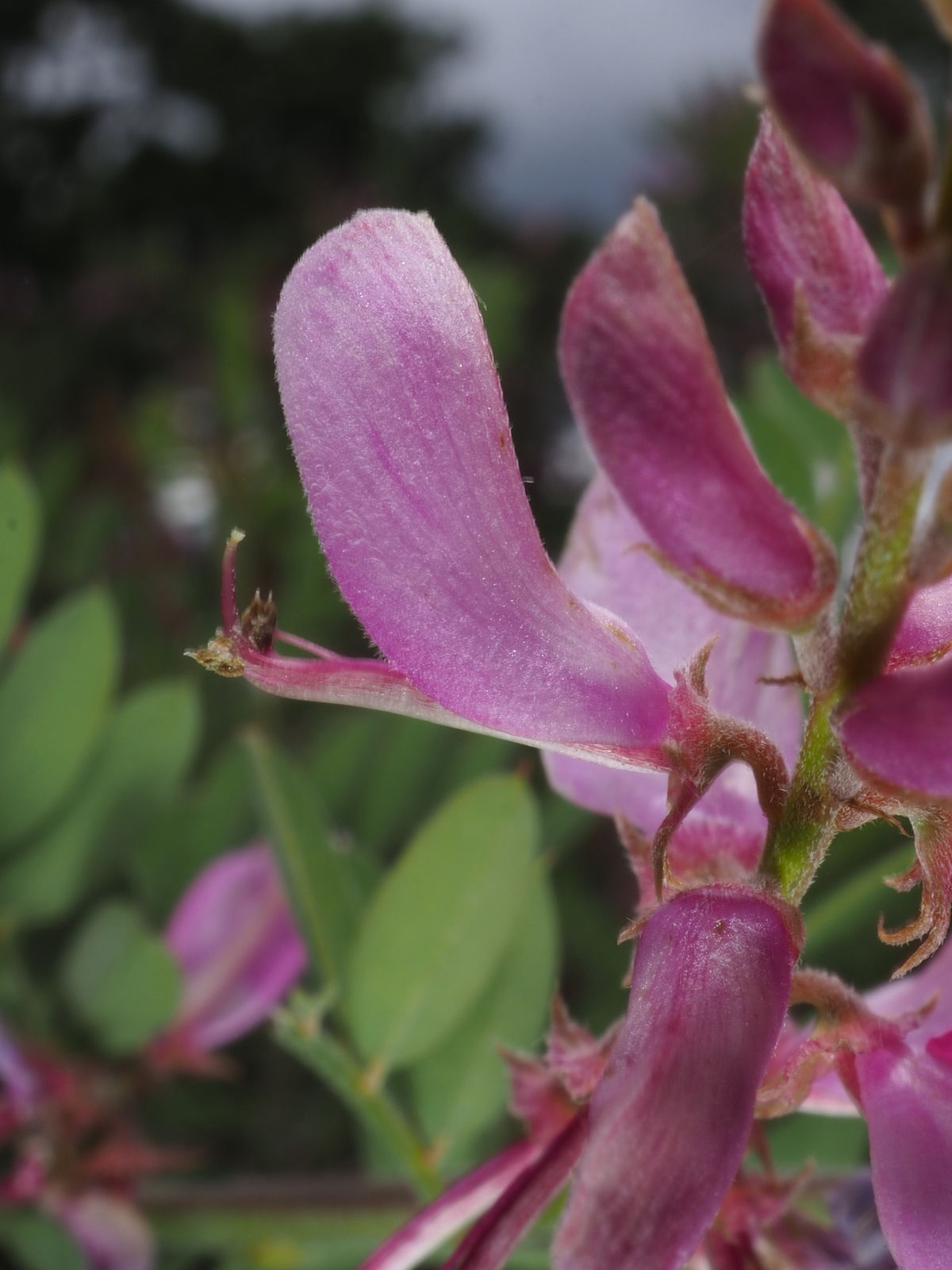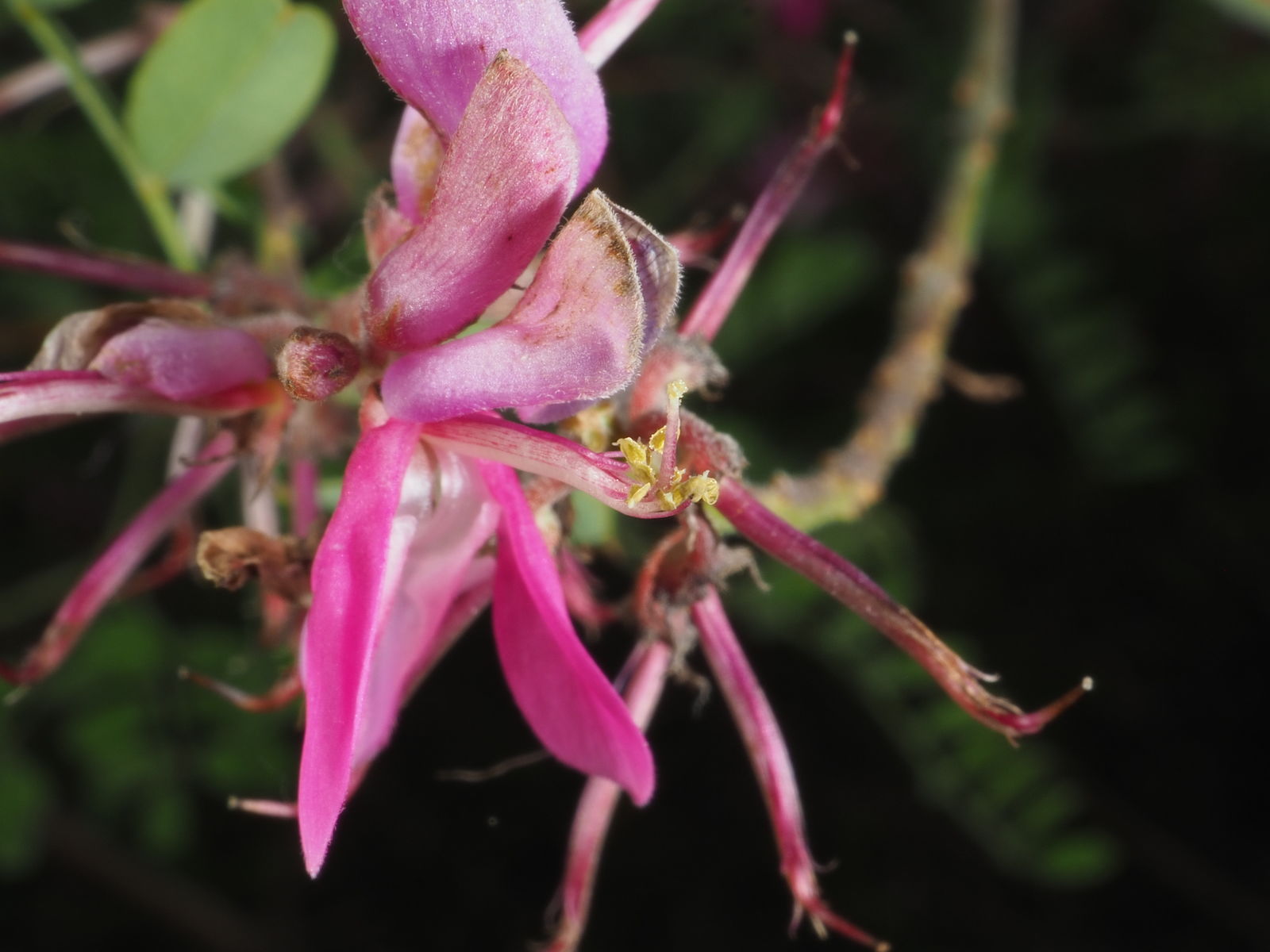Himalayan Indigo
indigofera heterantha
Also known as: ["Himalayan Indigo Tree","Indigofera heterantha"]
Overview
A deciduous shrub native to the Himalayas, known for its attractive pinkish-purple flowers and blue-green foliage.
Benefits & Perks
["fragrant flowers","wildlife attractant (bees, butterflies, birds)","drought tolerant"]
Botanical Classification
| Phylum: | Magnoliophyta |
| Class: | Magnoliopsida |
| Order: | Fabales |
| Family: | Fabaceae |
| Genus: | Indigofera |
| Botanical Name: | Indigofera heterantha |
Plant Characteristics
Basic Information
- Category: Shrubs
- Suitable Location: outdoor garden bed in a sheltered spot
- Suitable For:
- Is Weed: No
- Allergenicity: low
Environmental Needs
- Climate: {"temperatureRange":"0–35°C"}
- Hardiness: {"zones":"6–8"}
- Misting: rarely required, only if ambient humidity is very low
- Drainage: Fast-draining to prevent waterlogging.
- Soil Type: Well-draining, loamy soil with added organic matter.
Maintenance Level
- Maintenance Level: moderate
- Toughness Level: moderate
- Pruning Frequency: Annually in late winter or early spring before new growth begins.
- Pruning Intensity: Moderate; remove up to one-third of old growth to rejuvenate the plant.
Care Details
Ideal Sunlight Coverage:
Full sun to partial shade; 6–8 hours of direct sunlight daily, with some afternoon shade in hot climates.
Sunlight Tolerance Tips:
Acclimate gradually if moving from indoors to outdoors; protect from intense midday sun to avoid scorching; adjust placement based on seasonal light changes.
Care Requirements
Care Difficulty
moderatemoderate
Sunlight
full sun to partial shade
Rotate plant for even growth; use sheer curtains to filter harsh sunlight; provide dappled shade in peak summer.
Watering
every 7–10 days during growing season, reduce in winter
Water thoroughly but infrequently; ensure soil dries between waterings; avoid overwatering, especially in winter.
Soil
well-draining, loamy soil with some organic matter
pH: Slightly acidic to neutral, pH 6.0–7.0.
Avoid heavy clay soils; ensure pots have drainage holes; amend with organic matter for better structure.
Temperature
Prefers cool to moderate temperatures, 50–75°F (10–24°C); tolerates cold but not extreme heat.
Avoid sudden temperature fluctuations; protect from drafts; maintain consistent temperatures for optimal growth.
Fertilizing
every 4–6 weeks during active growth
Fertilize lightly during active growth; avoid over-fertilizing, which can burn roots; flush soil occasionally to prevent salt buildup.
Propagation
Methods
Stem cuttings or seed; stem cuttings are more reliable for home growers.
Step-by-Step Propagation Guide
- Take 4–6 inch cuttings.
- Remove lower leaves.
- Dip in rooting hormone.
- Plant in medium.
- Keep moist and warm.
Best Time: Late spring to early summer when the plant is actively growing.
Environment
High humidity (70–80%), warm temperatures (65–75°F), and indirect light.
Medium
Well-draining mix of perlite and peat moss or cactus mix.
Hormone
Rooting hormone is recommended to improve success rates.
Timeline
Roots may develop in 4–6 weeks; establish in new pot after 2–3 months.
Tools Needed
Pruning shears, rooting hormone, small pots, misting spray bottle.
Quick Tips
Use healthy, non-flowering stems; maintain consistent moisture; provide bottom heat if possible.
Pruning & Repotting
Pruning Guide
Method
Selective thinning and heading back to shape the plant and improve air circulation.
Pruning Plan
Prune to maintain shape, encourage bushiness, and remove dead or diseased growth.
Tools
Pruning shears, sharp knife, disinfectant.
Checklist
Disinfect tools; prune during dormancy; remove dead/diseased wood; shape evenly.
Repotting Guide
Best Season
Early spring before active growth starts.
Pot Size
Increase pot size by 2–3 inches in diameter.
Method
Remove plant gently; trim roots if needed; repot in fresh, well-draining soil with a slightly larger pot.
Suggestions
Repot every 2–3 years or when roots fill the pot; beneficial for root health and growth.
Checklist
Choose appropriate pot; prepare fresh soil; handle roots carefully; water after repotting.
Advanced Care Tips
Watering Mastery
Watering Checklist
Check soil moisture before watering; water deeply; ensure drainage; adjust frequency seasonally.
How to Apply Water Properly
Water at the base of the plant, ensuring moisture reaches the root zone; water early in the day to minimize evaporation; allow excess water to drain away completely.
Watering Schedule Tips
Water deeply once the top inch of soil feels dry; reduce frequency in winter to prevent root rot.
Soil Improvement
Add perlite or coarse sand for drainage; incorporate compost for fertility; ensure good aeration.
Temperature Stress Management
Signs of Temperature Issues
Yellowing leaves, wilting, or leaf drop in excessive heat; stunted growth or browning leaf edges in cold stress.
Cold Stress
Slows growth, may cause leaf drop, and can lead to root damage if temperatures drop below freezing.
Solution: Protect from frost with a frost cloth; ensure good drainage to prevent cold waterlogging; move potted plants to a sheltered location.
Hot Stress
Leaves may scorch, wilt, or drop; flowering may be reduced; growth may become stunted.
Solution: Provide shade during peak heat; increase watering frequency; improve air circulation around the plant.
Fertilizing Guide
Fertilizing Checklist
Use appropriate fertilizer; apply at correct dilution; fertilize during growing season only.
Fertilizing Method
Use a balanced, slow-release fertilizer in spring; dilute liquid fertilizer to half-strength if needed; avoid fertilizing in winter.
Common Problems & Solutions
Toxicity Warning
Cats
ToxicIndigofera heterantha is toxic to cats due to its quinolizidine alkaloid content. These compounds can cause severe neurological and gastrointestinal distress in felines.
⚠️ Symptoms:
🌿 Toxic Parts:
⚡ Toxic If:
if eaten
Dogs
ToxicThe quinolizidine alkaloids present in Indigofera heterantha are toxic to dogs, affecting their nervous and digestive systems. Ingestion can lead to severe health complications requiring immediate veterinary attention.
⚠️ Symptoms:
🌿 Toxic Parts:
⚡ Toxic If:
if eaten
Humans
ToxicIndigofera heterantha contains quinolizidine alkaloids, which can cause significant physiological disturbances when ingested. These compounds interfere with the nervous system and metabolic processes, leading to adverse health effects.
⚠️ Symptoms:
🌿 Toxic Parts:
⚡ Toxic If:
if eaten
Frequently Asked Questions
Q: Is Indigofera heterantha toxic to pets?
A: There is insufficient data on its toxicity to pets.
Q: How often should I water Indigofera heterantha?
A: Water moderately, allowing the soil to dry slightly between waterings.
Q: Does Indigofera heterantha attract wildlife?
A: Yes, it attracts bees, butterflies, and birds with its fragrant flowers.
Quick Reference
| Family: | Fabaceae |
| Care: | moderate |
| Light: | full sun to partial shade |
| Water: | every 7–10 days during growi |
Get Expert Care Tips
Download the Plantious app for personalized care reminders and plant identification!
Google Play App Store








